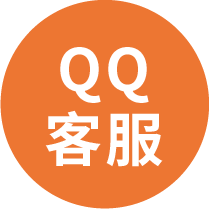AIF (AIFM1) Rabbit Polyclonal Antibody
CN¥ 5,808.00
CN¥ 2,900.00
CN¥ 6,650.00
CN¥ 3,080.00
Specifications
| Product Data | |
| Applications | IHC, WB |
| Recommend Dilution | WB: 1 ug/mL, ICC: 10 ug/mL |
| Reactivity | Human, Mouse, Rat |
| Host | Rabbit |
| Clonality | Polyclonal |
| Immunogen | AIF antibody was raised against a peptide corresponding to amino acids 517 to 531 of human AIF. This sequence is identical to those of mouse and rat AIF. |
| Formulation | PBS containing 0.02% sodium azide. |
| Concentration | 1ug/ul |
| Purification | Ion exchange chromatography purified |
| Conjugation | Unconjugated |
| Storage Condition | Store at -20°C as received. |
| Gene Name | apoptosis inducing factor, mitochondria associated 1 |
| Database Link | |
| Background | Apoptosis is characterized by several morphological nuclear changes including chromatin condensation and nuclear fragmentation. These changes are triggered by the activation of members of caspase family, caspase activated DNase, and several novel proteins (1). A novel gene, the product of which causes chromatin condensation and DNA fragmentation, was recently identified, cloned, and designated apoptosis inducing factor (AIF) (2). Like the critical molecules, cytochrome c and caspase-9, in apoptosis, AIF localizes in mitochondria. AIF translocates to the nucleus when apoptosis is induced and induces mitochondria to release the apoptogenic proteins cytochrome c and caspase-9. AIF induces chromatin condensation and large scale DNA fragmentation, which are the hallmarks of apoptosis, of the isolated nucleus and the nucleus in live cells by microinjection and apoptosis stimuli (2,3). AIF is highly conserved between human and mouse and widely expressed (2). |
| Synonyms | AIF; CMT2D; CMTX4; COWCK; COXPD6; NADMR; NAMSD; PDCD8 |
| Reference Data | |
| Protein Families | Druggable Genome, Transmembrane |
| Protein Pathways | Apoptosis |
Documents
| Product Manuals |
| FAQs |
| SDS |
Resources
| 抗体相关资料 |


 United States
United States
 Germany
Germany
 Japan
Japan
 United Kingdom
United Kingdom
 China
China



